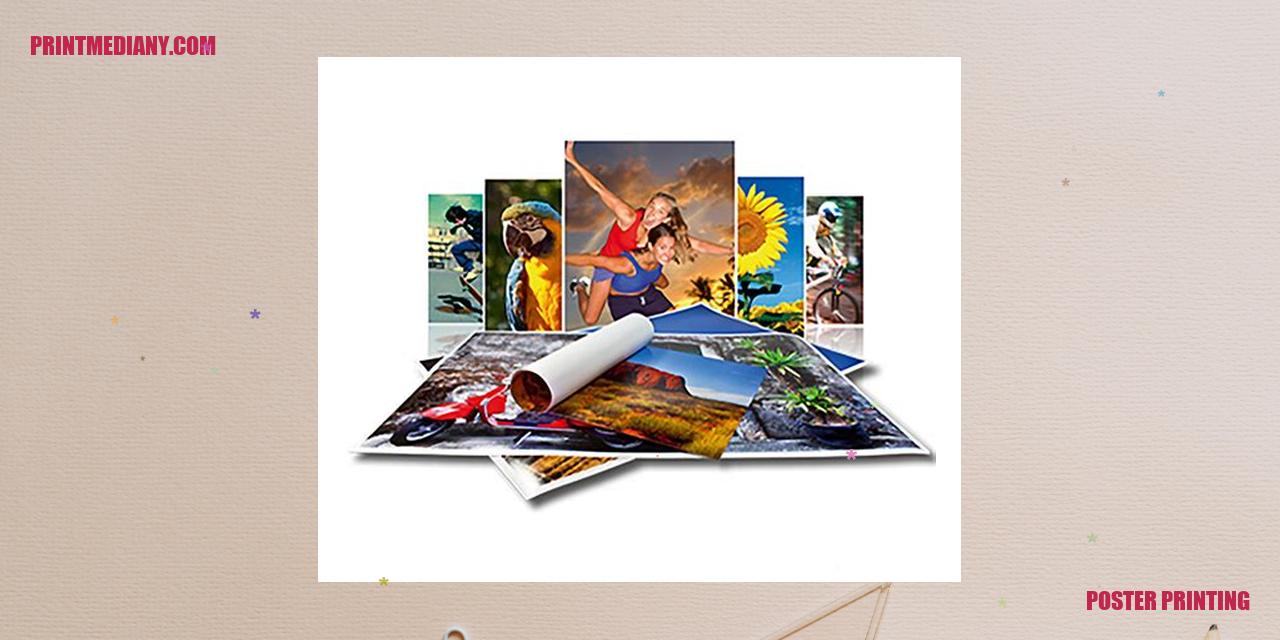
poster printing Services: A Guide to Types, Materials and Benefits
Types of poster printing
There are various types of poster printing available, including digital, offset, and large format printing. Digital printing is the most common method, while offset printing and large format printing are ideal for producing posters in high volume or large sizes.
Materials used in poster printing
Poster printing can be done on a range of materials, including paper, vinyl, canvas, and foam board. Paper posters are ideal for short-term use, while vinyl and canvas materials are more durable and suitable for long-term outdoor use. Foam board posters are best suited for indoor display.
The benefits of using poster printing services
Poster printing services offer a number of benefits for businesses, organizations, and individuals. First and foremost, they provide a cost-effective way to promote products, services, and events to a large audience. Posters are also a versatile marketing tool that can be customized to suit different styles, themes, and target audiences. Additionally, poster printing services offer a fast turnaround time and the ability to produce posters in large quantities.
Overall, poster printing services are a great investment for anyone looking to promote their business or event. By choosing the right type of printing and materials, you can ensure that your posters are effective and long-lasting.
Poster Printing Techniques
Digital Printing
Digital printing is the most popular method of poster printing in today’s world. It involves the use of digital printers that can print large format posters with high resolution and vibrant colors. This method is known for its quick turnaround time and cost-effectiveness. Digital printing allows for customization, making it a popular choice for businesses and individuals who want to print unique posters.
Offset Printing
Offset printing is another popular method of poster printing. It is known for its high-quality printing capabilities, producing sharp and accurate images. The method involves transferring the ink from a printing plate to a rubber sheet, which is then rolled onto the paper. This technique provides a wider range of color options and can be used for large quantities.
Screen Printing
Screen printing is a traditional method of poster printing that involves forcing ink onto the paper through a stenciled mesh screen. This method is ideal for printing on a variety of surfaces, including fabrics, plastics, and metals. Screen printing is known for its longevity, producing posters that can last for decades without fading. It is commonly used for printing limited-edition posters and art prints.
With these different poster printing techniques, you can choose the one that best suits your needs and budget. Whether you need high-quality, accurate printing, quick turnaround time, or unique customization options, there is a poster printing method that can help bring your ideas to life.
Mastering Poster Design: Tips for Success
When it comes to creating an effective poster, a well-designed layout is just the beginning. Understanding the principles of poster design can make all the difference in achieving a stunning final product. Keep reading to discover some key tips for designing posters that demand attention.
Understanding Poster Design Principles
Posters are visual communication tools that need to grab attention instantly and convey a message clearly and effectively. One of the fundamental principles of poster design is simplicity, which means sticking to a single, focused message. Clarity is another principle that designers should keep in mind. A cluttered poster with too many elements can lead to confusion and overwhelm the audience.
Read more:
- Airprint: Effortlessly Print Anywhere with Apple
- Revolutionize Your Printing with HP Instant Ink
- Revolutionize Your Printing Experience with Epson EcoTank
The use of contrast is also crucial in poster design. Contrast helps to create emphasis and pull attention to the key elements of your poster. There are several ways to create contrast including changing color, size, font, or texture.
Selecting the Right Fonts and Colors
Choosing the right fonts and color combinations can make the difference between a bland, forgettable poster and a poster that pops. When it comes to fonts, it’s important to use typefaces that are legible and appropriate for the message you want to convey. Avoid using too many fonts as it can create a chaotic look. Instead, stick to one or two fonts that complement each other well.
Color choice is also an essential aspect of poster design. Bold, saturated hues can create a more eye-catching poster, but it’s important to choose colors that also complement each other and fit the overall tone of your message. A good tip is to use colors that contrast with each other to create high impact.
Using High-Resolution Images
High-quality imagery can breathe life into a poster design and help convey your message more effectively. Low-quality or pixelated images can detract from the overall impact of your poster. When selecting images for your poster design, it’s crucial to choose high-resolution images that are clear and not blurred. Also, make sure the images complement your overall design and contribute to the overall message of the poster.
Creating a poster that effectively communicates your message and grabs attention requires a good understanding of design principles, typography, color theory, and high-quality imagery. Keep these tips in mind when designing your poster and let your creativity shine through.
